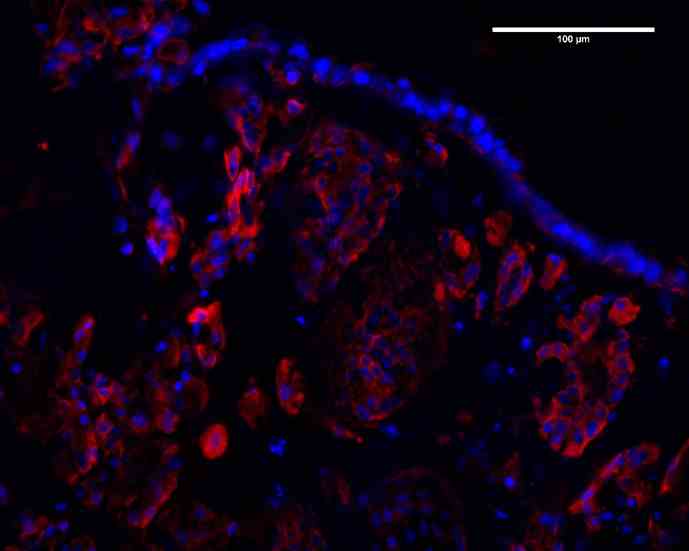CDT best image competition winner
Published 14 July, 2021
We are delighted to bring you the winning image from the Future Leaders in Regenerative Medicine: Joint CDT & UKSB image contest. Congratulations to Elisa Tarsitano, University of Nottingham, UK.

Within the liver, tissue resident cells exist in a state of dynamic reciprocity with the extracellular matrix (ECM) whereby the ECM provides structural and biochemical cues to influence cellular functions and cells respond by modifying the ECM. To direct cell behaviour, generation of a scaffold with similar biochemical properties to the ECM is therefore highly desirable. One of the main challenges of producing such a scaffold is to find suitable biomaterials that can recapitulate liver ECM microarchitecture and biochemical complexity. Synthetic and naturally derived hydrogels have previously been explored due to their biocompatibility, degradability and having similar mechanical properties to ECM. Adult progenitor liver cells have been identified as bipotent cells capable of differentiating to hepatocytes and cholangiocytes. Given the right cues and three-dimensional environment, progenitor liver cells can be differentiated into functional hepatocyte-like cells.
In this work, porcine livers were decellularised using an enzymatic and detergent washing process. Decellularised livers were digested and solubilised to form ECM-derived hydrogels. Human progenitor liver cells were encapsulated in porcine ECM-derived hydrogels to create in-vitro liver scaffolds. This novel approach can be utilised to produce a 3D environment that closely resembles the liver niche to culture progenitor liver cells and differentiate them into functional hepatocyte-like cells.